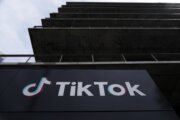U.S. inflation hit a 40-year high last month — rising at its fastest annual pace since December 1981 — of 8.5% in March.
It’s been decades since the U.S. faced significant inflation rates, and financial advisors worry that years of small, steady increases may have left consumers unprepared for today’s extended inflationary environment. In May 2020, the consumer price index dipped to 0.1% before quickly rising over the following nearly two years and prompting the Federal Reserve to raise interest rates in March 2022 in an attempt to temper inflation and rising prices.
Consumers have lived with higher prices for months with no end in sight, and they’ll now have to begin absorbing the first of seven possible interest rate hikes this year. Taking steps to hedge against inflation and prepare for higher interest rates should be part of everyone’s financial plan, whether inflation cools off or continues to ramp up in the coming months.
“We’ve been used to a period of time with relatively low inflation, so we’ve all gotten complacent. We’re seeing it now, and economists aren’t surprised necessarily, but a lot of everyday people are,” says David Weliver, personal finance expert and founder of Money Under 30.
[READ: Top Money Lessons From the Pandemic.]
What Is Inflation?
Inflation means consumers can buy less with the same amount of money.
The rate of inflation is measured by the consumer price index, which calculates the average change over time in the prices consumers pay for a market basket of goods and services. Inflation typically rises slowly, often unnoticed by consumers. During periods of high inflation, the effects can become more severe, triggering a cycle of rising prices and interest rates while the value of the currency falls.
Over the last century, average annual inflation in the U.S. has ranged from upwards of 10% to lows of -10%. Ideally, the Federal Reserve aims to reach a target inflation rate of 2% to 3% in the long term. This rate represents a balance between inflation that is too high, causing a burden on families seeking to purchase essentials such as food and gasoline, and inflation that is too low, which can weaken the economy.
Inflation can come and go, surging temporarily or hanging over an economy for years, or be confined to certain sectors.
Today, however, Gary Zimmerman, managing partner of Six Trees Capital in New York and founder of MaxMyInterest.com, says, “people have started to acknowledge that inflation is more than transitory.”
“Inflation is difficult for people to understand,” he adds. “Everyone has been making financial plans with the expectation the Fed would try to keep inflation at about 2% a year. Probably no one planned for 8% inflation each year. It may feel good to get a raise, but unless you’re keeping pace with inflation, you’re further behind.”
Why Does Inflation Occur?
Today’s inflation is caused by multiple factors, Weliver says, including a sudden demand for goods while supply struggles to keep up amid the pandemic, low interest rates and large amounts of cash in consumer pockets following government stimulus payments.
“What happens when you print money is you put more dollars into the supply and the value of each dollar goes down,” Weliver says. “We have these three things going on at once, so not surprisingly, inflation is really starting to pop.”
Talk of inflation can also be self-fulfilling, Zimmerman says, changing the way consumers and companies think about prices.
“In an inflationary environment, the first thing that happens is a company’s costs go up. They pass those costs to customers in the form of higher prices,” he says. “As long as labor market conditions continue to be tight — the very act of people asking for raises, or we’ve seen McDonald’s offering large bonuses to people willing to work — that means they must raise their prices, and so it ripples through the economy.”
The Federal Reserve has some levers to pull that can cause or temper inflation. In today’s high inflationary environment, raising interest rates can make it more expensive for consumers and businesses to borrow for large purchases like real estate, thus reducing market demand — a sort of brake pedal.
On the reverse, government agencies may attempt to stimulate the economy during periods of low inflation or recession by sending an influx of cash to consumers in the form of checks or rebates — a sort of gas pedal.
The latest personal consumption expenditures inflation projections are 4.4% for 2022, 2.7% in 2023 and 2.3% in 2024, according to the Federal Reserve Bank of St. Louis.
[READ:How to Prepare for Food Inflation as Prices Rise]
How to Hedge Against Inflation
In an inflationary environment, consumers are reminded of an existential truth: Money is a social construct, mere paper assigned a value that can change overnight. Inflation breeds fear, but it doesn’t have to.
“Inflation tends to be temporary. Having plans in place can be more long lasting and more effective,” says Nilay Gandhi, a certified financial planner with Vanguard’s Personal Advisor Services. “Sticking to that plan will generally outpace inflation.”
As the threat of continued inflation looms, consider these strategies to hedge against inflation:
— Maintain a budget.
— Spend less than you earn.
— Delay purchases of goods severely affected by inflation.
— Build skills and work toward a promotion or raise to keep up with costs.
— Set clear, appropriate goals.
— Maintain a well-balanced, diversified investment portfolio.
— Choose an asset mix that suits your goals.
— Stick to the plan.
High inflationary environments can be an investing opportunity. Commodities like gold tend to be considered safe havens in times of high inflation, and this popular belief can be true, Weliver says, but it takes time for such investments to pay off. Typically, commodities should be held as one piece of a larger portfolio.
And as inflation rates rise and fall, advisors continue to suggest sticking to a financial plan and following the fundamentals of personal finance, such as spending less than you earn.
“Focus on the controlables,” Gandhi says. “Choose an asset mix that’s appropriate for the duration of that goal and the comfort level of ups and downs that could happen with that time frame.”
[Read: How to Ask for a Raise at Work]
However, periods of high inflation can also be devastating for a family’s budget, particularly as many families in the U.S. were already living paycheck to paycheck before sudden spikes in price tags at the grocery store and gas pump began popping up last year.
“Budgeting is the infrastructure for your financial life. If you budget, it will allow you to get through good times and bad times without the whole house of cards falling apart,” says Kimberlee Davis, host of The Fiscal Feminist. “Discretionary costs are what people need to focus on, and they might have to be brutal for a while. With inflation the way it is, it’s going to take more money to do the same things.”
More from U.S. News
Fed Meets Amid Growing Concern Over Inflation
Fed Raises Inflation and Economic Forecast, Hints at First Rate Hike in 2023
7 Ways to Save Money When Your Cost of Living Is High
Inflation Rates Are Breaking Records. Here’s What You Need to Know originally appeared on usnews.com
Update 04/19/22: This story was published at an earlier date and has been updated with new information.







